Artificial Intelligence
How is Artificial Intelligence Application Used in Law Enforcement
Artificial Intelligence (AI) is revolutionizing law enforcement in the United States by enhancing crime prevention, predictive policing, and real-time decision-making. From facial recognition to data fusion across agencies, AI tools improve efficiency, transparency, and accountability. However, these advancements raise critical ethical concerns, including privacy violations, potential biases, and the balance between innovation and regulation. As AI continues to shape the future of policing, addressing these challenges is vital to ensure justice, fairness, and respect for civil liberties.
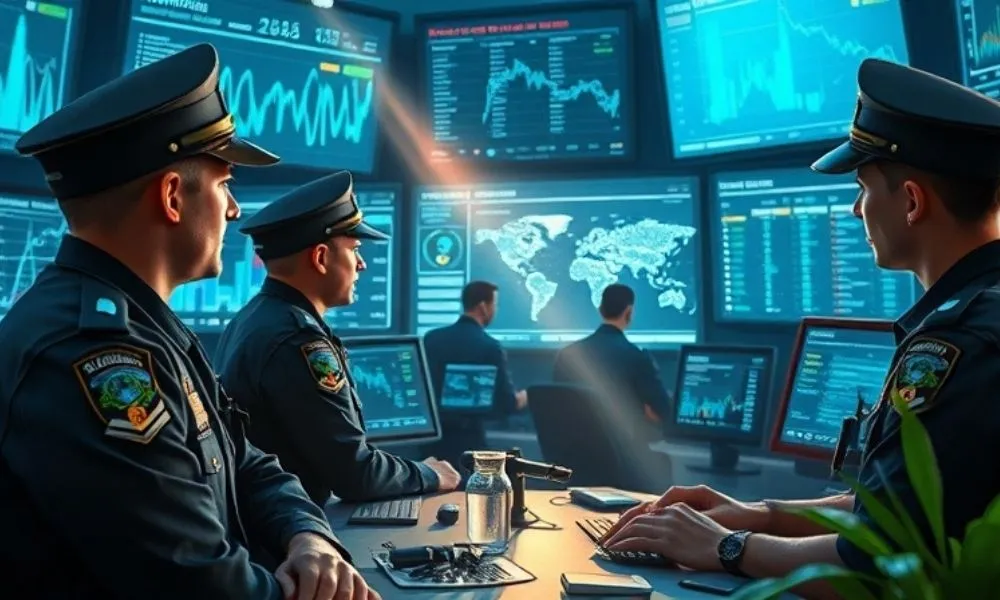
AI is gradually transforming many sectors among them being the law enforcement sector. Artificial intelligence technologies are now changing policing in the United States. It presents new ideas for enhancing inquiries and predicting patterns of crime. However, is this is a step forward for justice?
Definition of AI in law enforcement:
AI in policing refers to using technology to assist law enforcement. It helps with crime-solving, data analysis, and improving safety. AI can spot patterns, predict crimes, and help officers make better decisions.
Can we trust AI to make justice better without taking away our freedoms?
For a long time, AI has been a trend that marked the future of policing and provides equipment for effective investigations. Through the use of AI, police departments can handle crime as well as prevent it more effectively.
Predictive Policing:
Criminal forecasting is another benefit of AI to identify the time and place of a crime. AI algorithms can detect patterns from past crime data to predict the crime trends occurring in future. This enables the police to be able to direct efforts to areas likely to be associated with the commission of the crimes thus possibly avoiding the commission of the crimes. However, how reliable are these prognostications and can they contribute to excessive policed presence?
Facial Recognition:
This technology of having images of people analyzed through facial features is gradually becoming common in the police forces. AI can review image or a video to compare the face with that in the database. This can assist in pointing out the suspects when there is a large crowd, for example, in a uber-populated area. But what does it say about privacy and the probability of tagging the wrong people?
Real-Time Crime Analysis:
Another advantage of AI is that it helps analyze huge data and thus perform real-time crime analysis. Police officers might benefit from immediate information of the crime scene, thereby enriching their decision making at crime scenes. How dependable these systems are during emergent and uncertain conditions and whether they can effectively eliminate the human discretion?
Technology especially AI is playing a crucial role in changing how police departments conduct investigations. However, as we get acquainted with these ideas, it is important to look at the ethical or lack of it issues along with the demerits. How can we guard against the technology of unjust justice, or a justice that is unjust in the violation of civil liberties?
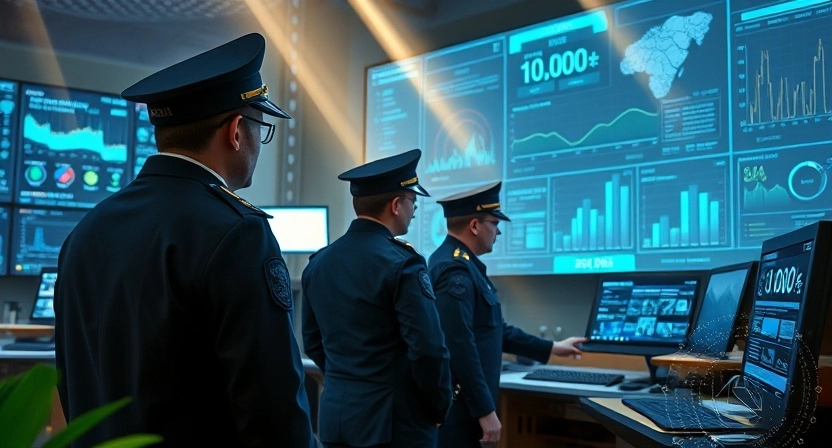
AI’s Impact on Accountability in Policing:
Technology specifically AI is revolutionizing the way police departments, boards and commissions address issues of accountability and transparency. By doing this, technology makes it possible for police departments to come up with better practices and increase trust with the populace.
Improved Monitoring of Officer Behavior:
AI can monitor and report the actions made by the officers for adherence to laid down procedures. Body cameras and AI software can alert officers, and also the public, when a police person, for instance, uses excessive force. Concerning this real-time monitoring how does it affect the performance of the officers?
Data-Driven Transparency:
AI means better data gathering and processing, so there is a detailed account of police performance. This data can be made more public thus increasing the transparency of the operation of law enforcement. Is it possible for such data to facilitate the trust between police and communities where people want to share their information?
Bias Detection:
Another thing is that the AI tools can also identify bias in polcing. In patterns, such things as racial profiling or targeting specific groups in an unfair manner will be highlighted by AI. However, can bias in AI mean that human bias is completely eliminated, or is it just halfway there?
That means that the general impact of AI on accountability in policing is beyond doubt. As it claims to open up the system more it triggers issues related to privacy and fairness as well. What are the challenges for policing in this area: How can the police strike a balance between technological developments and the requirement of ethical practices?
Practical Applications of AI in Law Enforcement:
This paper establishes that AI is highly relevant and essential to the current functioning of law enforcement agencies. From solving criminal cases to increasing effectiveness of police work, AI is changing the way of agencies’ work.
Tackling Child Sexual Abuse Material (CSAM):
AI helps in the identification and elimination of CSAM on online environments. Thanks to the technology of image and video recognition, AI can find prohibited materials much faster than people. To what extent does AI work in detecting these sensitive papers without the violation of personal data?
Combating Transnational Crime:
Decision-making is another area where AI can contribute to the battle with transnational crime: it is able to identify suspicious trends in large datasets. This assists police departments to track criminals across the borders. Can AI be instrumental in uniting all global forces against organized crime?
Enhancing Localized Investigations:
AI is also used in local investigations, for example in processing the video or in social networks. From facial recognition and behavior analysis, it is easier for AI to tag the suspects. How does this technology affect investigations at the community level and how?
AI practical applications in law enforcement are numerous and have positive effects. However these technologies call for ethical concerns in terms of privacy and also biasness. What measures can be taken to make use of AI by police machineries responsible?
Challenges and Ethical Considerations:
Although the application of AI in the field of policing can be advantageous in many ways, there are still some key issues to fight, including ethical ones. In this regard, the application of AI improves the effectiveness of work in law enforcement agencies while at the same time raising questions that require further consideration.
Data Bias and Its Impact:
One of the biggest problems with AI systems is that they use data in order to operate, and data can be prejudiced. Historical data tend to incorporate old prejudices that could cause prejudiced results. Where and how is law enforcement ensuring that AI models don’t have such biases and delivers equal outcomes for all the factions?
Privacy Concerns in AI Surveillance:
Some of the sophisticated advanced intelligent technologies include facial recognition that used in surveillance systems. But they may cause an encroachment of individual’s right to privacy. For what ways shall the police maintain surveillance while at the same time protect the rights of individuals to privacy?
Lack of Empathy in AI Systems:
This is because AI does not possess the emotional intelligence and empathy that human officers must supply to situations. This has implications to the quality of policing especially in delicate issues. How do we guarantee that employing AI does support human officers in the course of their work without compromising or eliminating the human aspect needed for the job?
Transparency and Accountability Challenges:
AI decision making is quite concealed from even the most elementary questioning, therefore the process of reaching the final decision cannot be easily explained. This can leave policing practices unaccountable for and outside of the rule of law. What can police and other law enforcement organizations do to make AI-predicated decisions as transparent as possible?
AI in Law Enforcement: Governance and Oversight:
Incorporation of AI in Police work increases as the technology advances thus the need for governance and regulation. This requires correct structures in order to avoid this and safeguard the rights of the citizens.
Establishing Clear Governance Frameworks:
Frameworks on the use of AI in policing are useful since they act as a guide to law enforcement. They identify the scope and conditions of functioning of AI systems. The guidelines for the use of AI must be clear and enforceable, but how can law enforcement achieve that?
Oversight Mechanisms for AI Deployment:
It is imperative to have supervision so as to constantly check on the operations of the AI systems, together with the results generated there from. It promotes the accountability, fairness, and mordenization of the use of artificial intelligence. When it comes to misuse of the particular AI technologies, how can police authorities guarantee proper checks and balances?
Legal Considerations in AI Use:
Artificial intelligence legal issues has to be designed to abide by current laws and constitutional rights. How can police officers not overstep the law even when using the artificial intelligent tools?
Balancing Innovation and Regulation:
AI has the ability to revolutionalise policing, but proper regulation should be given to it. Sometimes, more innovation implies less regulation, which has negative repercussions every now and then. In what ways is it feasible for law enforcement to sustain effective innovation in policing as well as adequate regulation?
Surveillance, Monitoring, and Data Integration:
AI mostly helps in improving surveillance and monitoring of the society and thus assists the police in identifying any threats within the shortest time possible. Co-ordination of data across agencies increases effectiveness and coordination and therefore reduces vulnerability.
AI in Surveillance Systems:
The AI based surveillance system can analyze large volume of data in shorter time span. That is why, it becomes easier for the police and law enforcement agencies to detect cases of suspicious activities. What additional improvement does AI bring to the use of surveillance technology for better results?
Real-time Monitoring with AI:
Such monitoring allows police officers to tackle occurrences as they are being staged. Real-time data is processed by AI tools and generate notifications of possible threats to the involved officers. What advantage is there of having a real-time monitoring system, especially when it comes to crimes or emergencies?
Data Integration Across Agencies:
AI makes the integration of data from many agencies which compile laws a single platform for information gathering. This has the effect of improving coordination and multiplier effects. In what ways does application of integrated data across the agencies enhance the fight against crime?
Improved Decision Making Through AI Integration:
Integrated data is improved by AI to create better decision making for the law enforcement departments. This in turn results in faster and accurate responses. In what way does the use of integrated data systems improve decision making and overall functionality of law enforcement?
Legal and Regulatory Landscape:
This paper finds that the application of AI in policing raises legal and regulatory issues in issues of privacy and civil liberties. It is crucial to analyze what statuses and what regulations are available for proper and safe AI usage in law enforcement practice.
Legal Frameworks Surrounding AI in Policing:
The more policing work incorporates AI, the more there is need to have well-defined laws that address the use of AI. They make certain that the AI application obeys the constitutional provisions of the people’s rights and embrace them. Which legal strategies apply to govern the use of AI in policing?
Regulatory Measures for AI Use:
Policies act as guidelines to the appropriate use of AI in policing and all the policies expose how AI can be used in policing. These regulations also play a big part in avoiding abuse. In what ways does the regulation keep AI fair and safe to use in policing?
Privacy Concerns with AI in Policing:
Privacy threats: AI solutions implemented in the police force can cause major threats to privacy in areas such as surveillance and data gathering. One more important thing to say is that personal information should be well protected. In what way does privacy play a role in the use of artificial intelligence in law enforcement?
Balancing Public Safety and Civil Liberties:
The first among the major controversies of police work is the conflict of interest between the protection of the general public and the rights of every citizen. AI must improve public security without compromising on people’s rights. For instance, how can the police use Artificial Intelligence in their operations without infringing on the rights to privacy?
AI and Data Fusion in Law Enforcement:
Coordinate and intelligent data fusion is revolutionizing the process of investigation and cooperation between police forces. When operating in their synthesis mode, AI makes the investigations faster and more efficient through a combination of data from multiple sources.
What is data fusion in law enforcement?
Data fusion is the practice of integrating data from various sources to gain a richer picture of a given condition. This data is well managed and synthesized through the use of AI in the modern business environment. This paper sought to understand how data fusion improves the investigative process in law enforcement.
Improving Investigations Through AI-Driven Data Fusion:
In essence, the application of AI in the areas of data fusion enables law enforcement agencies to discover patterns and linkages that may not have been easily discernible. This enhances the quality and efficiency of investigation as well. In what ways can the use of AI in data fusion enable investigators to achieve better outcomes in faster time?
Collaboration Across Agencies Using AI and Data Fusion:
AI and data fusion which allow the LEA to share data and insights in real time help the agencies to work in synergy. This enhances the action against crime in general. In what ways does AI help in creating cooperation and communication between various entities of law enforcement?
Benefits of AI in Data Analysis and Decision-Making:
AI assists the police to deal with enormous pieces of information and make correct conclusions much faster. This results in better prevention and early indicators. How does data analysis assisted by artificial intelligence help in improving decision making particularly in law enforcement?
Decision Intelligence and AI in Investigations:
Shaping Investigations with Decision Intelligence:
AI in investigative decision-making is a blending of information analysis and human skill to improve decisions. It involves structured approaches when assessing evidence and making requisite prognoses.
Predictive Analytics in Solving Crimes:
It is the application of collected data toward the prediction of crimes and the likelihood of a suspect. This makes it easier for law enforcement to act preventatively.
Enhancing Efficiency Through AI:
Artificial intelligence tools help to eliminate the complex processes of investigation through processing big data within a few seconds. This enhances the flow of case progression besides timely provision of resources.
Reducing Human Errors in Investigations:
AI reduces biases because the systems analyze information in a straightforward way and therefore are more efficient in investigations. It favors rational and equal treatment decisions.
Collaborative Power of AI and Humans:
AI accents investigators by speeding up data analysis, and humans add feelings and contextual understanding to decision-making. This in turn improves efficiency as functions feed in the other to have a better outcome.
What changes in law enforcement investigations do you envision due to AI in the future?
Enhancing Law Enforcement with AI Tools:
In our case, advanced use of AI for policing is enhancing the effectiveness of law enforcement organizations. All these tools enable the officers to adequately prevent and control crime as well as increase safety within the society.
What is Meant by AI Tools Used in Policing?
Voice/Video solutions and license plate recognition are among the AI tools, which help the police in searching and evaluating evidence. In detail, how do these technologies help enhance functionality in the working of law enforcement?
Voice and Video Solutions in Law Enforcement:
Speaking and recognizing technologies allow police departments to analyze video recordings and audio files. This speeds up the process of suspect and event, identification. What roles do voice and video tools to support crime-solving play when they are based on artificial intelligence?
License Plate Recognition Systems:
LPR technology enables the police force to follow vehicles in real time. It improves patrols and finds people connected to criminal deeds. In what way does LPR technology help law enforcement agencies to identify and monitor the suspects better?
AI Tools for Real-Time Decision Making:
They also give the law enforcement officers information and analysis information and data in real time hence enabling them to make decisions faster. It also increases the ability to respond quickly to incident and threat occurrences. In what way does the use of AI enhance decision making for the police when responding to emergencies?
Future of AI in Policing:
Today artificial intelligence is present in every aspect of policing, including surveillance and crime prevention and these systems have significant ethical consequences. What more can be expected from the AI in law enforcement in the future?
The last question that arises is what is going to come next regarding AI in the policing environment?
AI in policing is still developing fast, particularly in functions such as surveillance and prevention of crime. What do you think future developments include in the application of AI in policing?
AI and Surveillance:
In the future, AI will be very important when it comes to improving the surveillance systems. These cameras advanced by Artificial Intelligence and backed by data analysis create the ability of the police to monitor crime in real-time. What are the implications of artificial intelligence in surveillance while it comes to crime identification and prevention?
AI in Crime Prevention:
Criminals are also fought through AI since it can give us estimates of crimes in future based on past data. this, is known as the predictive policing and can assist the officers in preventing the crimes from happening. In what way can crime fighting be enhanced by integrating predictive AI and enhance the safety of the public?
Ethical Implications of AI in Policing:
AI has many advantages, but it also present major ethical issue. Concerns such as privacy violation and prejudice in the algorithms should be addressed. This paper examines how AI technologies raise ethical issues for use in Law enforcement.
Role of Policymakers in Shaping AI’s Future:
In the subsequent years, policymakers will have an essential part to determine the application of AI in policing. Lack of clear regulations will lead to imbalance of security and privacy. This paper seeks to answer the following questions: How can governments ensure more responsible use of AI in policing?
Conclusion:
AI is now available in policing, making crime control effective by providing state-of-art means of detection and suppression. But an important element is human judgment still present. Technology can be used, but the actual human perception and understanding of the situation should not be eliminated. With proper intermediary for the Department to build a balanced policing system which employs both the AI and human discretion, the latter stands to gain a fair system.
I believe that is the biggest question when it comes to the use of AL in policing; how much AI should be allowed and how much of that should be done by humans. What do you think? Leave your comment below!
-

 Artificial Intelligence8 months ago
Artificial Intelligence8 months agoWhat is Artificial Intelligence? A Comprehensive Guide for Businesses and Enthusiasts
-

 Artificial Intelligence6 months ago
Artificial Intelligence6 months agoHow to Use Grok AI: A Complete Guide
-
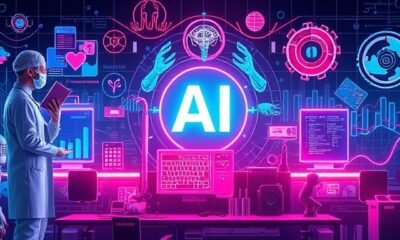
 Artificial Intelligence8 months ago
Artificial Intelligence8 months agoUnlocking the Power of Artificial Intelligence Tools
-
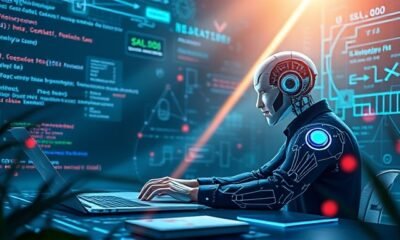
 Artificial Intelligence7 months ago
Artificial Intelligence7 months agoWhat is DeepSeek? Revolutionizing AI with Cutting-Edge Solutions
-
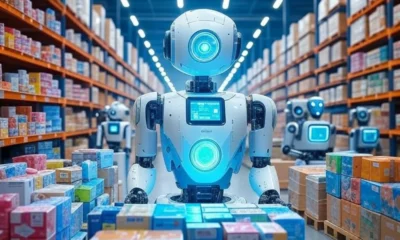
 Artificial Intelligence3 months ago
Artificial Intelligence3 months agoAI Technologies in Warehouse Automation:
-

 Artificial Intelligence4 months ago
Artificial Intelligence4 months agoMeta’s AI Push: The Standalone Assistant App Set to Rival ChatGPT
-

 Artificial Intelligence3 months ago
Artificial Intelligence3 months agoHow Artificial Intelligence is Revolutionizing Logistics:
-
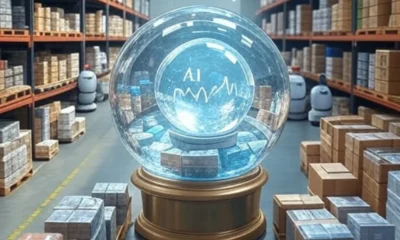
 Artificial Intelligence3 months ago
Artificial Intelligence3 months agoPredictive Analytics for Demand Forecasting:


